Want to learn about Japanese nori?
You may know it as that crunchy dried seaweed that you’ll find in Japanese dishes.
So, in this guide, you will discover…
- Why Japanese People Love Nori
- What Makes Nori so Special
- Popular Dishes with Nori
- And Other Japanese Seaweeds
1. Introduction to Japanese Nori
What’s nori? Nori is an edible seaweed that is shredded and dried to create sheets. Or, nori sheets.
These nori sheets look black and the process of making them is similar to paper-making.
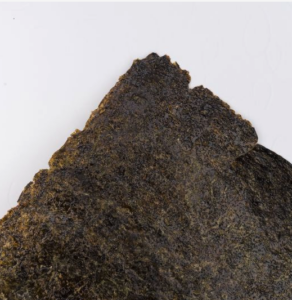
Japanese people have been eating Nori since ancient times and it is a part of many Japanese dishes. Nori is very versatile. You can use it to wrap sushi, eat it with rice, or eat it as a snack.
Japanese nori is popular all over Japan and makes up an important part of Japanese food culture.
Outside of Japan, it is eaten in Korea, where they have their own version called gim. Gim is flavored by sesame oil and salt. In Western countries, nori is eaten as a health food and most people associate it with sushi.
2. So, What Makes Nori Special?
Glad you asked.
Nori is unique because the process of making it is tied into the development of paper-making technology. Before the Edo period, nori was mainly eaten as a paste. But then, Japanese people realized they could use the same technology for paper-making in nori. So, the Edo period was also the time when sushi became popular. And, this is why many types of sushi contain nori.
If you’re looking to get some Japanese nori, you can easily get some on Amazon (affiliate link).
Another reason why Japanese people love nori is that it’s a great way to hold rice. In part 3, you’ll learn all about all the kids of Japanese Food that contain nori. The dry sheets help keep your hands clean when you’re eating sushi, rice balls, or mochi (sticky rice). Nori also adds a depth of flavor to the plain rice.
In terms of nutritional benefits, nori is extremely healthy. It contains protein and valuable vitamins such as vitamin A and vitamin B. Nori also contains niacin, iron, and zinc.
Japanese Nori contains:
- Vitamins
- Vitamin A
- Vitamin B
- Vitamin C
- Minerals
- Potassium
- Niacin
- Iron
- Zinc
- Calcium
- Magnesium
- Fiber
If we’re going to mention benefits, then we should also include health risks too. Daily consumption of too nori is discouraged due to toxic metals and/or amphipod allergens (crustaceans). So, long story short: Don’t eat too much every day.
“However, Porphyra sp. contains toxic metals (arsenic and cadmiun) and/or amphipod allergens, the levels of which vary significantly among nori products. Further evidence from human studies of such beneficial or adverse effects of nori consumption is required.”
J. Agric. Food Chem. 2017, 65, 49, 10685–10692Publication Date:November 21, 2017Copyright © 2017 American Chemical Society
Sources: http://www.nagainori.co.jp/english/about_seaweed03.html https://en.wikipedia.org/wiki/Nori https://pubs.acs.org/doi/10.1021/acs.jafc.7b04688
3. Japanese Food with Nori
So, where is Japanese seaweed used? Well, you can find nori in…
A) Maki sushi
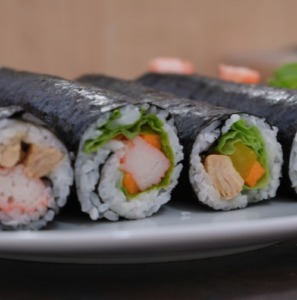
One of the most common ways to encounter nori is in maki sushi. What’s maki sushi? Maki sushi are sushi rolls wrapped in nori. The nori wrapping prevents the rice and ingredients from falling out.
B) Temaki sushi
Temaki means hand rolled in Japanese. In temaki sushi, square pieces of nori are filled with rice and ingredients and wrapped like a cone. So, temaki sushi is just sushi wrapped in a cone.
C) Gunkan
This is another type of sushi that uses nori. Gunkan means war ship, and these sushi are in the shape of little boats. Inside the boats there is rice and sushi toppings that might easily fall out (salmon roe, uni, tuna paste).
D) Onigiri
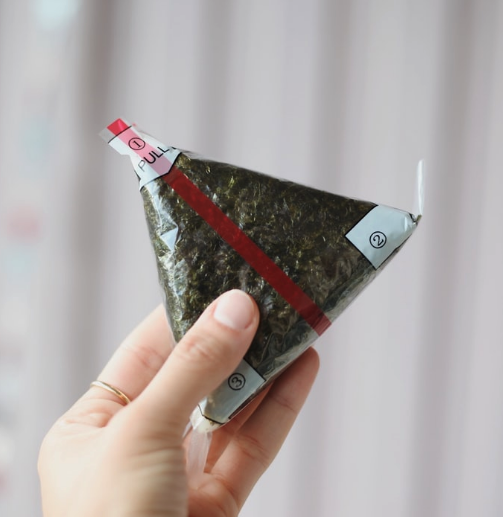
Onigiri is a ball of rice with an ingredient inside. The outside of the rice ball uses nori so that the hands don’t get dirty and there are some added flavors to the rice. Onigiri is a common lunch food.
E) Isobe maki
Mochi (sticky rice cakes) are also commonly wrapped in nori. This is to hold the mochi inside, which is very soft and sticky. In the image above, it is the bottom-left dish, just above the chopsticks.
F) Norimaki arare
A popular snack in Japan is the norimaki arare. These are crunchy rice crackers shaped in cylinders. The outside is wrapped with roasted nori.
G) Ramen
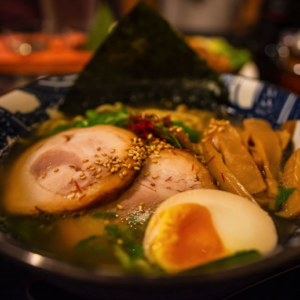
Nori is commonly found as a topping in ramen. A small rectangular piece is added on top to add some extra flavors.
H) Various Cold noodles
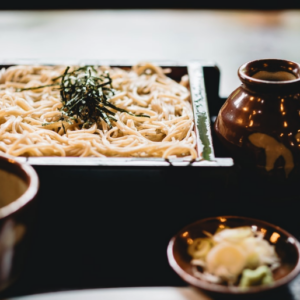
Soba (buckwheat) noodles and other Japanese noodles are sometimes served cold with a dipping sauce. These noodles are usually accompanied by thinly cut pieces of nori.
I) Mentaiko pasta
This is a Japanese spaghetti dish made with fish eggs (specifically Pollock roe.) Mentaiko contains thin cut pieces of nori sprinkled on top at the end.
4. Different Types of Japanese Seaweed
So, Japanese Nori aside…
There are other types of Japanese sea weed. You’ll see pictures for each one and the pictures are linked (affiliate) to Amazon where you can learn more. Take a look…
A) Ao nori (green laver)
Although it contains the name “nori”, this seaweed is a completely different seaweed from nori. In Japan, ao nori is dried into flakes and sprinkled as a topping to many dishes! These dishes include takoyaki, okonomiyaki, yakisoba, and even tempura. It has a green color, and it is a good source of calcium, magnesium, vitamins, and amino acids.
B) Kombu
Kombu is a thick kelp that is dried and used as the base for soup stocks. It contains plenty of iodine and dietary fiber. This is where many Japanese dishes get their umami flavors. Kombu is one of the reasons why Japanese cuisine tastes so flavorful while being healthy.
C) Agar agar (or just agar)
This is a substance made from red algae, that is used in many Japanese desserts like mizu yokan (red bean jelly) or anmitsu (a desert with cubes of agar agar). It has a jelly-like texture that is also high in fiber, though you’d mostly find it sold in powder form. Outside of Japan, it has become a popular plant-based alternative to gelatin.
D) Hijiki
Hijiki is a black colored seaweed that’s been eaten in Japan since ancient times. It’s usually simmered together with other ingredients like tofu, vegetables, or fish. Hijiki is a great source of fiber, calcium, iron, and magnesium. However, outside of Japan there are warnings for eating too much hijiki because it contains small amounts of arsenic.
E) Wakame
This seaweed is usually dried and soaked in water before eating. It’s used in soups and salads. The most common dish with wakame is miso soup. It’s said that wakame can help with burning fat and contains healthy nutrients like omega 3.
F) Mozuku
Mozuku is a unique superfood that is found in Okinawa, Japan. This is a brown colored seaweed that can be helpful against cancer. It’s usually eaten with a vinegar sauce.
G) Umi budou (sea grapes)
One of the most unique seaweeds in Japan is the umibudou or sea grapes. These look like little grapes and have a salty taste when they break. They are usually served fresh with soy sauce.This seaweed can benefit people with diabetes and lower lipids.
Conclusion
Now you know enough about Japanese nori — what it is, where it’s from, how it’s used, and what makes it special.
If you’re interested in getting some, you can find plenty on Amazon (affiliate link).
– Team It’s Japanese



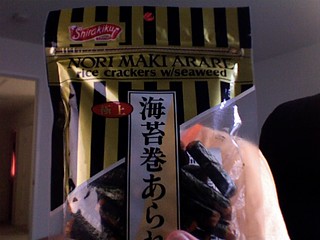







[…] probably one of the most well known and unique Japanese foods. Sushi consists of vinegared rice, nori (Japanese seaweed), raw fish, and occasionally vegetables. Despite being known for “raw fish,” the most […]